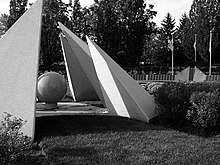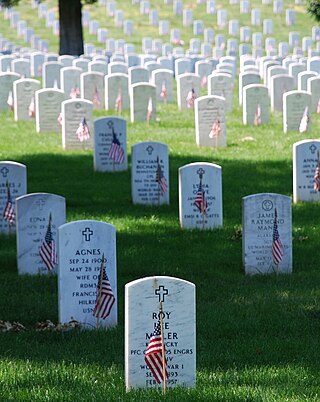
Memorial Day is a federal holiday in the United States for mourning the U.S. military personnel who have died while serving in the United States armed forces. It is observed on the last Monday of May. From 1868 to 1970 it was observed on May 30.

Remembrance Day is a memorial day observed in Commonwealth member states since the end of the First World War in 1919 to honour armed forces members who have died in the line of duty. The day is also marked by war remembrances in several other non-Commonwealth countries. In most countries, Remembrance Day is observed on 11 November to recall the end of First World War hostilities. Hostilities formally ended "at the 11th hour of the 11th day of the 11th month" of 1918, in accordance with the armistice signed by representatives of Germany and the Entente between 5:12 and 5:20 that morning. The First World War officially ended with the signing of the Treaty of Versailles on 28 June 1919.
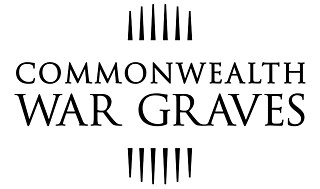
The Commonwealth War Graves Commission (CWGC) is an intergovernmental organisation of six independent member states whose principal function is to mark, record and maintain the graves and places of commemoration of Commonwealth of Nations military service members who died in the two World Wars. The commission is also responsible for commemorating Commonwealth civilians who died as a result of enemy action during the Second World War. The commission was founded by Sir Fabian Ware and constituted through Royal Charter in 1917 as the Imperial War Graves Commission. The change to the present name took place in 1960.

The Korean War Veterans Memorial is located in Washington, D.C.'s West Potomac Park, southeast of the Lincoln Memorial and just south of the Reflecting Pool on the National Mall. It memorializes those who served in the Korean War (1950–1953). The national memorial was dedicated in 1995. It includes 19 statutes representing U.S. military personnel in action. In 2022, the memorial was expanded to include a granite memorial wall, engraved with the names of U.S. military personnel who died in the war.

A war memorial is a building, monument, statue, or other edifice to celebrate a war or victory, or to commemorate those who died or were injured in a war.
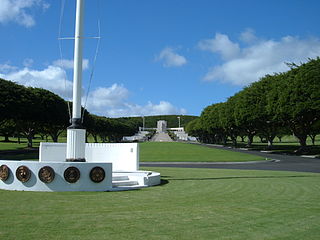
The National Memorial Cemetery of the Pacific is a national cemetery located at Punchbowl Crater in Honolulu, Hawaii. It serves as a memorial to honor those men and women who served in the United States Armed Forces, and those who have given their lives in doing so. It is administered by the National Cemetery Administration of the United States Department of Veterans Affairs and is listed on the National Register of Historic Places. Millions of visitors visit the cemetery each year, and it is one of the most popular tourist attractions in Hawaii.
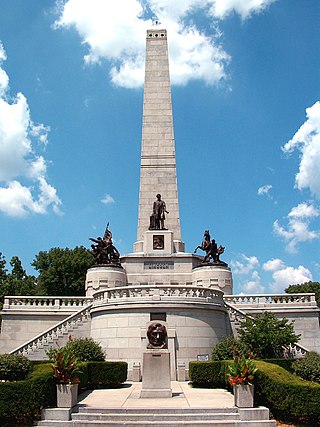
The Lincoln Tomb is the final resting place of Abraham Lincoln, the 16th President of the United States; his wife Mary Todd Lincoln; and three of their four sons: Edward, William, and Thomas. It is located in Oak Ridge Cemetery in Springfield, Illinois. It is constructed of granite and has a large, single-story rectangular base surmounted by an obelisk, with a semicircular receiving room entranceway on one end and a semicircular crypt or burial-room opposite.
The Peace Tower is a focal bell and clock tower sitting on the central axis of the Centre Block of the Canadian parliament buildings in Ottawa, Ontario. The present incarnation replaced the 55-metre (180 ft) Victoria Tower after the latter burned down in 1916, along with most of the Centre Block; only the Library of Parliament survived. It serves as a Canadian icon and had been featured prominently on the Canadian twenty-dollar bill directly adjacent the queen's visage, until the change to polymer.

Sai Wan War Cemetery is a military cemetery located in Chai Wan, Hong Kong which was built in 1946. The cemetery was created to commemorate soldiers of Hong Kong Garrison who perished during the Second World War. The cemetery also contains 12 World War I burials. A total of 1,528 soldiers, mainly from the Commonwealth, are commemorated here. Most of the remaining burials are located at the Stanley Military Cemetery.
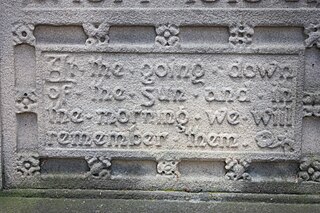
"For the Fallen" is a poem written by Laurence Binyon. It was first published in The Times in September 1914.

The Military Museums is a reorganization of the former Museum of the Regiments in Calgary, Alberta, announced by Sophie, Countess of Wessex, on June 3, 2006. The new museum comprises the former Museum of the Regiments as well as the relocated Naval Museum of Alberta and an Air Force Wing consisting of artifacts being acquired.

The Beatty Street Drill Hall is a Canadian Forces armoury located at 620 Beatty Street in Vancouver, British Columbia. It is the home of The British Columbia Regiment, an armoured reconnaissance reserve regiment, the oldest military unit in Vancouver, and the most senior militia in the province.

Next of Kin Memorial Avenue is a roadway and National Historic Site of Canada which is part of Woodlawn Cemetery in Saskatoon, Saskatchewan, Canada. Trees along the roadway are dedicated to Saskatoon's war dead. On official city maps, however, the street's name is abbreviated to Memorial Avenue. Many other trees along other roadways within the cemetery are also similarly dedicated.

The Australian War Memorial in London is a memorial dedicated in 2003 to the 102,000 Australian dead of the First and Second World Wars. It is located on the southernmost corner of Hyde Park Corner, on the traffic island that also houses the Wellington Arch, the New Zealand War Memorial, the Machine Gun Corps Memorial and the Royal Artillery Memorial.
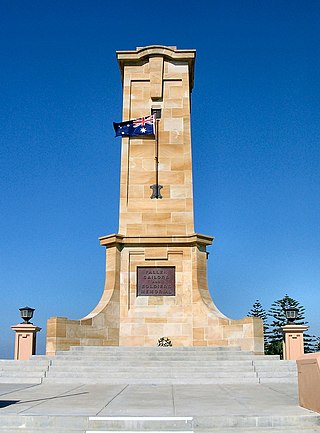
The Fremantle War Memorial is a war memorial located on Monument Hill, an 11-acre (4.45-hectare) public reserve and hill in Fremantle, Western Australia. The memorial itself comprises a large obelisk, the Fallen Soldiers' and Sailors' Memorial, surrounded by eight smaller memorials. The site, located on High Street near the centre of Fremantle, overlooks Fremantle Harbour, and was established by the Fremantle Town Council in 1928 to commemorate the losses of the First World War, having been used as a public reserve since the early 19th century.

The United Nations Memorial Cemetery in Korea, located at Tanggok in the Nam District, City of Busan, Republic of Korea, is a burial ground for United Nations Command (UNC) casualties of the Korean War. It contains 2,300 graves and is the only United Nations cemetery in the world. Laid out over 14 hectares, the graves are set out in 22 sites designated by the nationalities of the buried servicemembers.
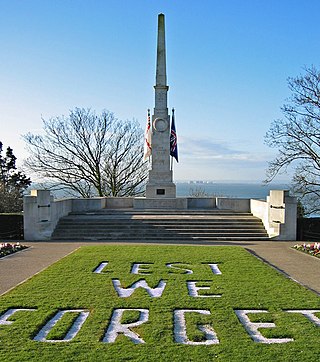
Southend-on-Sea War Memorial, or Southend War Memorial, is a First World War memorial in Southend-on-Sea, Essex, on the east coast of England. Designed by architect Sir Edwin Lutyens, it is a Grade II* listed building.

Atherton War Cemetery is a heritage-listed cemetery at the corner of Kennedy Highway and Rockley Road, Atherton, Tablelands Region, Queensland, Australia. It was built in 1942. It was added to the Queensland Heritage Register on 19 November 2010.

Lincoln's Inn War Memorial is a war memorial in Lincoln's Inn, London. It was erected in 1921 as a memorial to members of the Inn of Court who died on active service during the First World War. It became a Grade II listed building in 1999.
